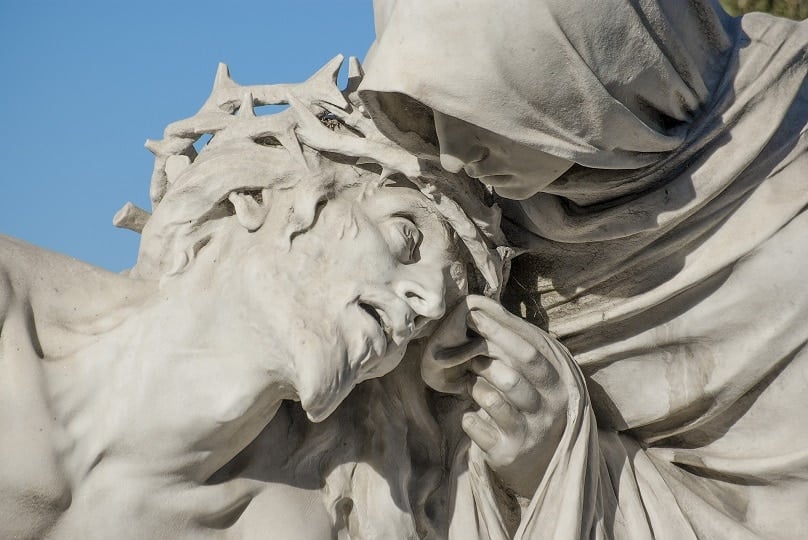 Part 2 of Mark’s series on Models of the Church
Part 2 of Mark’s series on Models of the Church
The first model of the Church is the Marian model. Mary is, as St Ambrose tells us, the Type of the Church. And she is the type of the Church because she is the very first and very best disciple of Jesus who ever lived.
Early Christian exegetes loved typology. They were constantly mining the Old Testament for types of Christ or the Spirit or the Church. And this is natural enough given that Jesus did the same thing and taught the apostles to do likewise.
He littered his preaching, not just with Old Testament images he referred to himself, but to the Holy Spirit and the Spirit’s great work: the Church. So things like wind (such as the wind that drove back the Red Sea in the Exodus) or cloud (such the pillar of cloud that guided Israel in the Exodus) become images of the Holy Spirit while Israel itself, or vineyards, or flocks of sheep, become images of the Church.
This is all part and parcel of the sacramental worldview: the understanding that nothing is merely itself. It lives in relation to the rest of creation and this whole great complex of interrelated things is a gift from God—and his gifts communicate grace to us.
Mary is therefore seen as a “great sign” (Revelation 12:1) because through her, the greatest gift God could give—himself—was given to us in flesh and blood, via her “Yes”.
“Yes” is the fundamental act of the disciple. Upon that Yes hangs the entire existence of the Church and through that Yes goes the life of every Christian believer. Every time we say (and do) what God desires, we are recapitulating the Yes of Mary, the Primal Disciple, who always said Yes, no matter how hard it got.
“Note that Mary always says Yes, not that she always understands what is going on as she says it. She says Yes out of a trust in God”
Note that Mary always says Yes, not that she always understands what is going on as she says it. She says Yes out of a trust in God, not out of her omniscient understanding of God. Her way is gestative before it is productive. She gestates before giving birth, prays and thinks before acting, lives in faith before giving birth to the Word made flesh. She “keeps all these things in her heart” long before they come to fruition in deed.
The essential characteristic of the Disciple is to will “May it be done to me according to your word” in all God commands. Mary did this before every other disciple and more perfectly than any other disciple. That is why she is the Type of the Church. If you want to see the Church in a sort of miniature figurine, look at her.
Mary not only gives herself wholly to the purposes of God in the birth of Jesus, but every day after that, right to the foot of the Cross. She is warned at the very start that a sword will pierce her soul too. With the focus we rightly place on the agonies of Christ crucified, it is easy to forget her agonies in the Crucifixion. We all know stories of parents who have had to watch their children suffer and die.
We hear the anguish of David in the Old Testament, mourning, “O Absalom, Absalom! My son! My son! Would that I had died instead of you!” (2 Samuel 18:33). It was the burden of Jesus to hang upon the Cross. But it was the burden of Mary not to hang upon the Cross: to watch in horror and confusion—and faith—as the worst thing that could ever happen happened before her eyes.
It is she, not Jesus, who experienced the piercing of Jesus’ heart. He was already dead. The sword pierced her who had to watch.
This shows us something about the Disciple: “I trusted, even when I said, ‘I am greatly afflicted’” (Psalm 116:10) The Disciple shares in the sufferings of Christ in the trust that God will bring good out of it somehow. Jesus, in a sort of earnest of the Resurrection gives his greatest disciple a mission: “Behold your son.”
Mary’s life as a disciple bears fruit in love for the whole Church of disciples, who are all her children. We are likewise called to spend ourselves in union with Jesus, trust that his risen and glorified life in us will bear fruit in others. Finally, the key thing to note is that discipleship is foundational. Mary was a disciple long before Peter and his Church of Office exists to serve disciples, not vice versa. Of which more next time.
Related:
